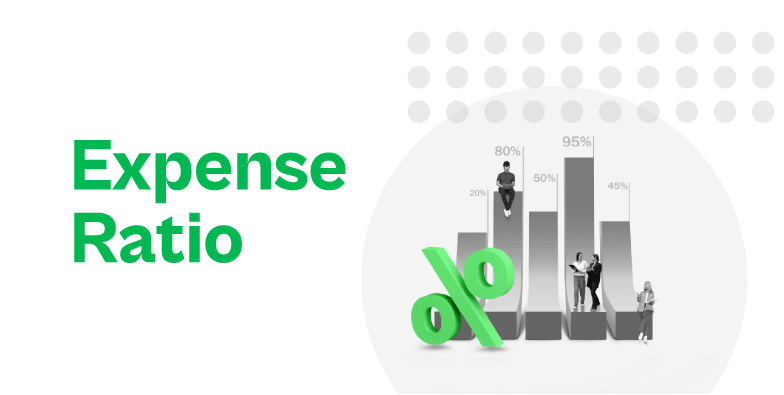The expense ratio is a small annual fee that mutual funds charge to manage your money. Think of it as the cost of running the mutual fund, similar to how a business has to pay for staff, office, marketing, and more.
Simple Example:
If a mutual fund has an expense ratio of 1% and you’ve invested ₹1,00,000, it means ₹1,000 is charged yearly as a fee.
What Does the Expense Ratio Cover?
The expense ratio includes all the regular costs a fund incurs. Here are the main components:
1️⃣ Management Fees
This pays for expert fund managers who research, plan, and invest your money wisely.
Example: You’re paying the fund manager to decide which stocks or bonds to invest in so your money grows.
Usually: 0.5% to 1%
2️⃣ Administrative Costs
Covers back-end work like investor records, support, and transaction handling.
Example: Think of it as the office work – tracking your investments, processing your entries/exits, etc.
3️⃣ Marketing & Distribution (12b-1 Fees)
Used to promote the mutual fund and pay intermediaries like brokers or advisors.
Example: Just like any product, mutual funds also advertise to attract investors. These costs are part of the fee.
4️⃣ Brokerage Charges (Only in Regular Funds)
Regular mutual funds use third-party advisors or brokers. Their fees get added to your expense ratio.
📌 Direct mutual funds skip the middlemen, which is why they have lower expense ratios.
🚪 What About Entry or Exit Loads?
- Entry Load: Charges while entering a fund (mostly removed now by SEBI).
- Exit Load: A small charge when you leave or withdraw your investment, often 1-2% if you exit early.
📌 Used to discourage short-term exits.
📊 Expense Ratio Formula
Expense Ratio = Total Expenses / Total Assets of the Fund
Key Insight:
Larger funds (more money managed) usually have lower expense ratios because fixed costs are spread out more.
A small fund managing ₹10 Cr may charge 2%, but a big fund with ₹1000 Cr might only need 1% to cover similar expenses.
How Does Expense Ratio Affect Returns?
The expense ratio is deducted before you get your returns.
📌 If your fund earned 12% this year and the expense ratio is 1.5%, your actual return will be 10.5%.
Higher expense = Lower return for you.
⚖️ High vs Low Expense Ratio – Which Is Better?
A higher expense ratio doesn’t always mean better performance.
- A low-cost, well-managed fund can give high returns.
- A high-cost fund may still underperform if not managed well.
Focus on long-term performance, not just fees.
📏 SEBI Rules on Expense Ratios
The Securities and Exchange Board of India (SEBI) sets limits to protect investors:
For Regular Mutual Funds:
- Up to 2.5% for the first ₹100 Cr
- Gradually reduces as the fund size increases.
For Index/ETF Funds:
- Max 2%, with similar tiered reductions
This helps ensure mutual funds remain fair and transparent in what they charge.
📌 Summary: Why Expense Ratio Matters
- It’s a fee you pay for fund management and operations.
- Affects how much return you finally get.
- Choose low-cost, well-performing funds for better outcomes.
- Prefer direct mutual funds for lower expense ratios.
💡 Tip: Always check the expense ratio before investing. You’ll find it on the mutual fund’s official page or sites like AMFI, Groww, or Moneycontrol.

